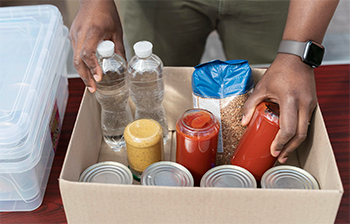Safety Tips for Sweeping Professionals |
Preparing for the Unpredictable: Practical Steps for Natural Disaster ReadinessA natural disaster can arrive with little warning, transforming everyday life into a test of resilience. The difference between chaos and coordinated action often comes down to preparation done well in advance.by Mickey Taylor, FloodSafety.info 
From understanding your region's unique hazards to ensuring your household has a tested plan, every step adds a layer of security. The strategies below break down readiness into focused, achievable actions that strengthen both personal and community resilience. Understanding Your Local RisksEvery location faces a distinct mix of threats, and preparation starts by knowing which ones could affect you most. By taking time to examine the hazards near you, you can prioritize your planning for the most probable scenarios. This might mean studying floodplain maps, reviewing seismic activity records, or tracking wildfire history. Local emergency management offices often publish detailed risk assessments, while environmental agencies provide data on hazards ranging from chemical spills to coastal erosion. Knowing the risks in detail informs every other decision you make in preparing. Safeguarding Important Documents DigitallyPaper records can be lost to fire, flood, or other damage long before you need them most. By taking the time to convert to PDF, you protect critical items like IDs, insurance policies, and medical files in a format that's easy to store, share, and back up. Once digitized, these files can be organized in secure folders on cloud storage services and mirrored to offline drives for redundancy. Having a digital archive means you can provide proof of identity or coverage even if your originals are inaccessible. It's a small preparation step that can save hours—or even days—of stress during recovery. Building a Disaster Supply KitA well-stocked kit ensures that basic needs are met when regular supply chains are disrupted. Start with essentials – water, non-perishable food, medications, and first-aid supplies – and build out to tools, personal documents, and comfort items. The simplest way to ensure nothing is missed is to follow this supply checklist, adjusting quantities for your household's size and special needs. Don't forget items for pets, infants, or elderly family members. Store your kit in an accessible location, check it twice a year, and replace expired or outdated supplies before they become a liability. Creating and Practicing a PlanPlans only work if they're clear, understood, and rehearsed. Begin by mapping evacuation routes from home, work, and school, considering both primary and secondary options. Identify meeting points inside and outside your neighborhood, and assign communication roles in case networks are down. Use guidance like California's resources to develop your evacuation protocols, then schedule regular family or household drills. Incorporate scenarios where members may be apart when disaster strikes. Protecting Your Remote Work SetupIf you work from home, a disaster can instantly halt both your professional and personal routines. Planning to create a remote work disaster plan helps safeguard your income and obligations when emergencies strike. This can include identifying alternative workspaces, arranging backup power sources, and keeping multiple communication channels ready. Ensuring your critical business files are backed up and accessible from anywhere adds another layer of security. With a clear plan in place, you can resume operations quickly and maintain client trust even during disruptions. Learning from Other Places' ApproachesRegions that face frequent emergencies often develop innovative preparedness cultures. Studying these can reveal adaptable ideas for your situation. For example, rural communities contend with long distances to resources and fewer emergency services, making local self-reliance essential. By exploring rural preparedness challenges, you can identify strategies like neighborhood response networks, shared supply caches, and volunteer medical training. These lessons can be applied in urban and suburban areas too, especially in moments when official aid is delayed. Joining Community Response EffortsPreparedness grows exponentially when communities act together. Local Community Emergency Response Teams (CERT) train residents in disaster response basics, from light search and rescue to fire suppression and medical aid. When you engage with CERT training locally, you not only gain valuable skills but also join a network of people ready to coordinate when it matters most. Beyond formal programs, joining neighborhood groups, volunteer fire departments, or even informal mutual-aid networks builds the social infrastructure that disasters can't easily disrupt. Preparing for a natural disaster isn't about living in fear; it's about building a safety net of knowledge, supplies, and connections that can carry you through uncertainty. By understanding your risks, securing your essentials, rehearsing your plans, and engaging with your community, you transform vulnerability into resilience. The work you put in today could one day protect your life and the stability of your community. Mickey Taylor is a writer involved with safety concepts and emergency preparedness. You may contact him via email sent to: MickeyTaylor@FloodSafety.info. |
© 2005 - 2025 All rights reserved. |
Back to Safety Tips Table of ContentsSite Map / Table of ContentsSite Map / Table of Contents |